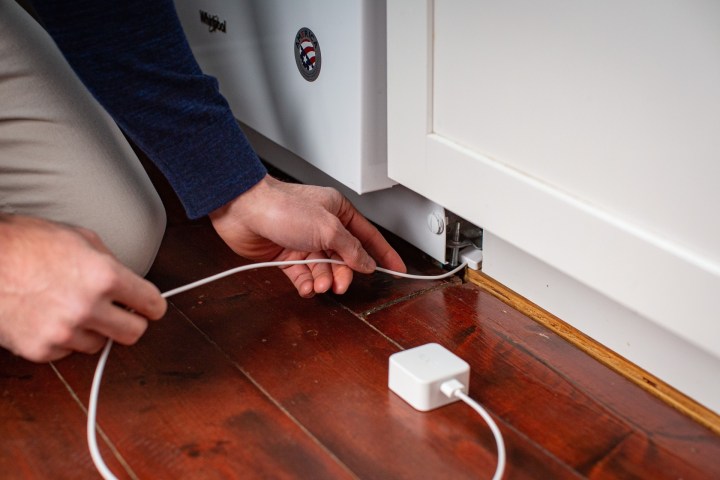Smart home brand Wyze is adding two new smart devices to its home monitoring lineup, enabling users to expand their kit to include extra capabilities for sensing moisture and climate conditions.
The first device is the Wyze Sense Leak Sensor, a battery-power sensor probe with an optional thin sensor that can be attached to extend the device’s capabilities. When water makes contact with either sensor on the probe, it can send a signal — up to 500 feet — to the home monitoring system so that owners get an alert about a potential leak.
Because of the extension-friendly design, users will be able to place the probe in common problem spots like under sinks or dishwashers, in crawlspaces below pipes, or in closets with a water heater (indoor use only). The battery is designed to last for an average of 18 months before the device needs to be replaced. The Leak Sensor is available in a two-pack for $15 and a three-pack version for $30 and is currently available for pre-order.

The second new device is the Wyze Sense Climate Sensor, a block-shaped sensor designed to be set up in a particular room where you want to monitor temperature and humidity. With a range of 500 feet, you can place the sensor in a room you want to track specifically, anything from a nursery or grow room to an attic room where temperatures may be very different compared to the rest of the home. Like the Leak Sensor, it too is designed with an 18-month battery and does not need to be plugged in to operate. A climate sensor three-pack is currently available for pre-order for $25.

Note that both sensors require the Wyze Sense Hub to work, which is part of the Wyze Home Monitoring Core Starter Kit. Earlier versions of the hub like the Wyze Sense v1 Bridge, are not compatible. Other home monitoring devices that can connect to the system include motion sensors and entry sensors focused primarily on home security.
These aren’t the only devices Wyze has been working on recently. In May, the company also announced a battery-powered Wyze Night Light that is designed to only turn on when it senses movement, saving energy while enabling more creative night-light positioning throughout the home.



